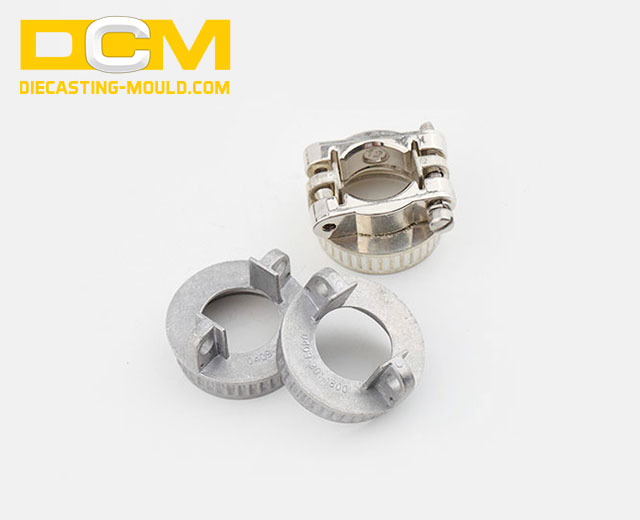When you want to figure out the cost of aluminum die casting, the raw material is an essential part of that. What affects the material cost in aluminum casting?

Raw Material Cost of Aluminum Die Casting - Factors of Aluminum Alloy Price
The factors affecting the market price of aluminum alloy are divided into two aspects. One is the market factor: raw materials, like industrial rice, belong to the buyer’s market, and their prices are often not determined by manufacturers or dealers. The second is the cost factor. After decades of development in the aluminum alloy industry, the process and equipment have been formed. It is difficult for the fixed cost to affect the price of aluminum alloy in a short time.
Market
What is the study of market factors? The relationship between supply and demand determines the price and output of products and is the driving force of market price changes. When we discuss the influencing factors of aluminum alloy price, we are actually discussing the relationship between the supply and demand of aluminum alloy. From the short-term and long-term aspects, let’s look at the influencing factors of the supply-demand relationship.
Short-term impact:
1) Raw material inventory of each link in the aluminum alloy industry chain.
2) The economic situation of the product application industry in each link of the aluminum alloy industry chain. Both supply and demand play a key role in price changes.
Long-term impact:
1) Contract relationship: China’s bauxite reserves only account for 4% of the world’s total. The ore quality is low and the output of electrolytic aluminum ranks first in the world. Under the double pressure of supply and demand, about 60% of the bauxite produced and consumed in 2019 is imported. China’s enterprises took the lead in establishing contractual relations with foreign bauxite mining countries. This contractual relationship actually monopolizes the import share of bauxite. It can be imagined that the enterprises that have not established such contractual relationships can only raise the price to obtain survival space due to insufficient supply.
2) Application trend: on the demand side, the development and expansion of aluminum alloy and aluminum product applications in all walks of life, such as the lightweight design of car bodies, cable with aluminum wire as core wire, aluminum alloy doors, and windows, building aluminum alloy substrate and other applications, continue to expand the demand for aluminum and aluminum alloy.
3) Technological innovation: Compared with the main production methods in China, the Bayer process of mineral processing saves 15% ~ 20% of construction investment and reduces the production cost by about 10%. The production energy consumption is reduced by 50%. Technological innovation can reduce costs, attract investment from the supply side and improve production efficiency.
4) Policy factors: calcination, smelting, chemical reaction, and other highly polluting processes are used in almost every link of the aluminum alloy industry chain. In order to reduce environmental pollution, the government will extend a visible hand to regulate the relationship between the market and the environment. The common manifestations are the issuance of emission permits that can be traded between enterprises, the direct restriction of pollutant emissions, and the setting of pollutant treatment and recovery standards.
5) Futures market: the price trend of aluminum alloy in the futures market is basically the same as that of the spot price, but there is a difference in time. When the spot price is low, some funds will buy large quantities of futures and stock up, which will affect the price of aluminum alloy in the future.
Variable cost in manufacturing
From the short-term and long-term perspectives, the impact of variable costs on prices in the manufacturing of aluminum alloy industry
Short-term impact:
1) Labor cost: the origin and application enterprises of aluminum alloy are distributed in various provinces and cities throughout the country, and the wages of workers in different regions are different according to different local policies and company policies.
2) Material cost: the aluminum alloy contains copper, iron, and other metal elements, and the price of these metals will also affect the cost of the aluminum alloy; In addition, according to different customer needs, aluminum alloy manufacturers often replace pure aluminum with recycled aluminum. The price of recycled aluminum and pure aluminum affects the material cost and the price of aluminum alloy.
3) Pollution control cost: different places have different requirements for environmental protection, and the pollution control cost of manufacturers in the aluminum alloy industry chain is also different.
4) Transportation cost: it includes the transportation cost of intermediate links such as the import transportation cost from the major bauxite mineral countries abroad, the transportation cost from the domestic bauxite production area to the alumina manufacturer, which is one of the factors affecting the price of aluminum alloy.
5) Energy consumption cost: as mentioned above, the aluminum alloy industry chain needs high-temperature and high-pressure processes, which require a large amount of energy. For example, the electricity cost of aluminum electrolysis accounts for 31%. And there is a large difference between North and South electricity prices. It has a great influence on the price of aluminum alloy; Changes in electricity prices have a direct impact on energy consumption costs.
Long-term impact:
More than 50% of China’s bauxite needs to be imported, so the import and export exchange rate and import and export policies will more or less affect the price of aluminum alloy.

